When it comes to contract non-renewal communications, clarity and professionalism are key. Crafting a letter that effectively conveys your decision while maintaining a respectful tone can make all the difference in preserving relationships. In this article, we'll walk you through a straightforward template for notifying your contractor or vendor that you won't be renewing their contract, ensuring that your message is both clear and courteous. So, let's dive into the essential elements of creating a thoughtful non-renewal letter and how to approach this sensitive topic with ease!
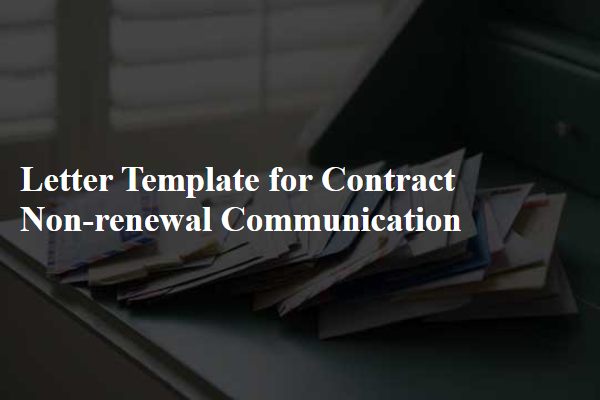
Clarity and Conciseness
Clear communication regarding contract non-renewal is essential for maintaining professional relationships. Contracts, typically spanning one year or more, often require a formal notice period, usually 30 to 90 days prior to expiration. Providing a concise explanation about why non-renewal is necessary, such as organizational changes or budget constraints, ensures transparency. It is crucial to specify the effective date of non-renewal and any last obligations that must be fulfilled, such as final payments or project completions. Addressing any outstanding matters or feedback mechanisms can foster amicable relations despite the conclusion of the contract.
Professional Tone
The non-renewal of contracts can create significant impacts on both parties involved, requiring careful consideration and clear communication. A contract conclusion typically involves reviewing specific clauses outlined in the agreement, such as termination rights and notice periods. For example, a formal notification, typically ranging from 30 to 90 days before the contract expiration date, ensures compliance with requirements. The venue for communication often includes written formats, preferably through email or postal service, along with a reference to contract details, including the contract number and effective dates. Additionally, providing reasoning for non-renewal, whether due to changing business needs or performance issues, helps maintain professionalism. This approach fosters transparent dialogue while minimizing misunderstandings before the contract officially concludes.
Reference to Contract Details
A contract non-renewal communication refers to the formal notification process indicating that a specific agreement will not be extended beyond its expiration date. This typically involves details such as the contract number, start and end dates, parties involved (such as Company A and Company B), and any relevant clauses related to non-renewal procedures or notifications. Stakeholders should pay attention to the required notice period (for example, 30 or 60 days prior to expiration) as mandated in the contract. It's essential to clarify reasons for the non-renewal, which could include performance issues, changes in business strategy, or financial constraints. Such communication should also ensure acknowledgment of any ongoing obligations or settlements stipulated in the contract until the end date. Documenting this process helps maintain professional relationships and provides a clear record for both parties.
Notice Period Compliance
Non-renewal communication refers to the formal notification process where one party informs another that a contractual agreement will not be extended beyond its current term. This process typically involves adherence to specific notice period requirements, often defined within the original contract. For many arrangements, a standard notice period ranges from 30 to 90 days. This timeframe allows the receiving party ample opportunity to make necessary adjustments, such as seeking alternative agreements or concluding pending obligations. Locations such as corporate offices must ensure compliance with local regulations regarding contract termination. Failure to follow notice period protocols can result in potential penalties or legal disputes, emphasizing the importance of clear and timely communication in contractual relationships.
Contact Information for Queries
Providing contact information is essential for clear communication regarding contract non-renewal. The designated contact person should include their full name, position, and department to ensure all inquiries are directed appropriately. Additionally, including a reliable phone number, preferably with area code, will facilitate quick and effective communication during the transition period. An email address should also be provided, ensuring written correspondence can be easily sent and tracked. The contact's office hours should be specified to set expectations for response times. This level of detail ensures stakeholders have precise avenues for addressing any questions or concerns related to the non-renewal process.

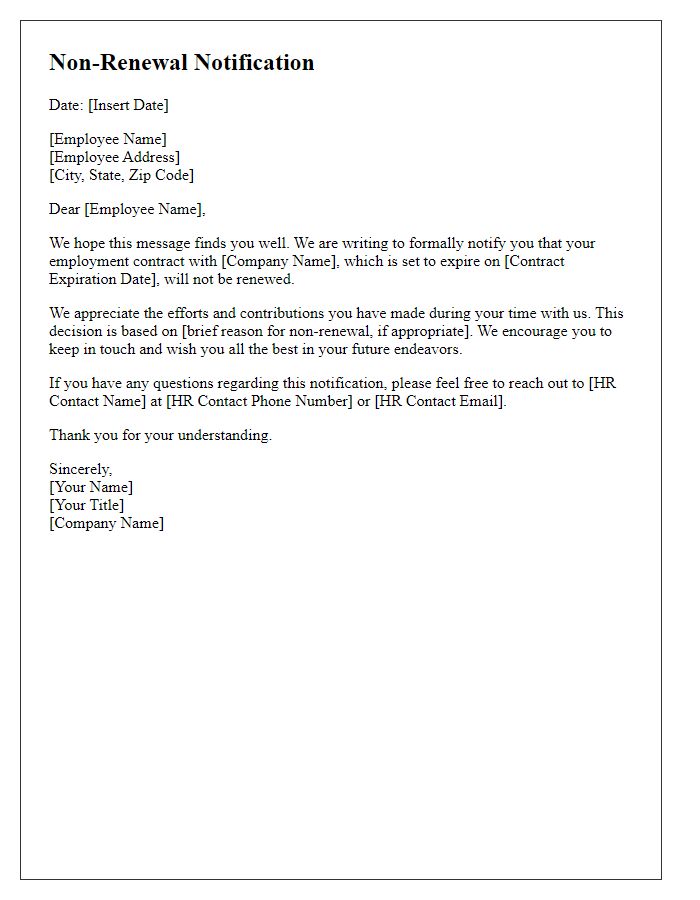
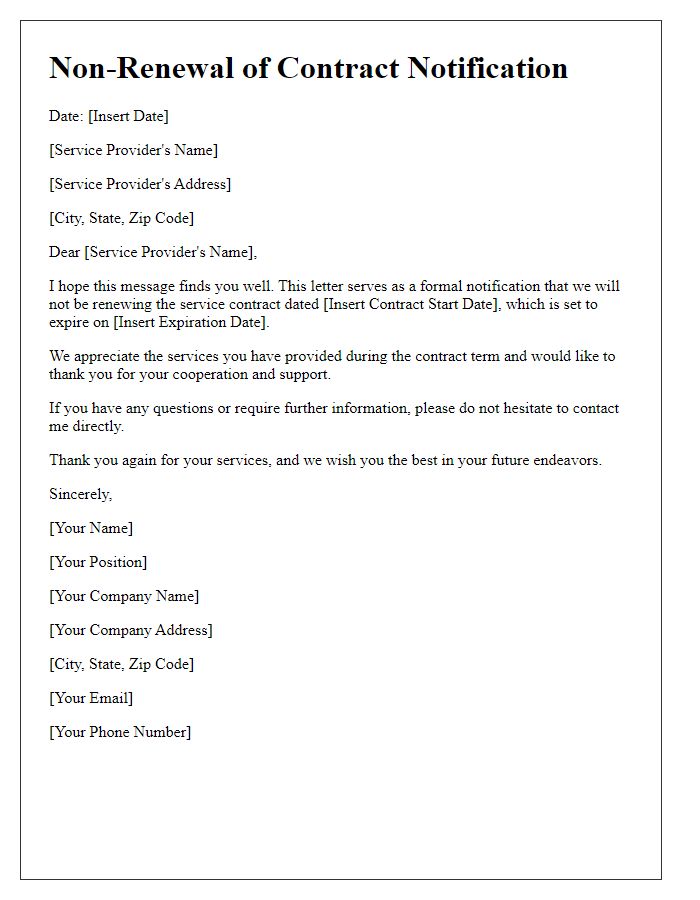
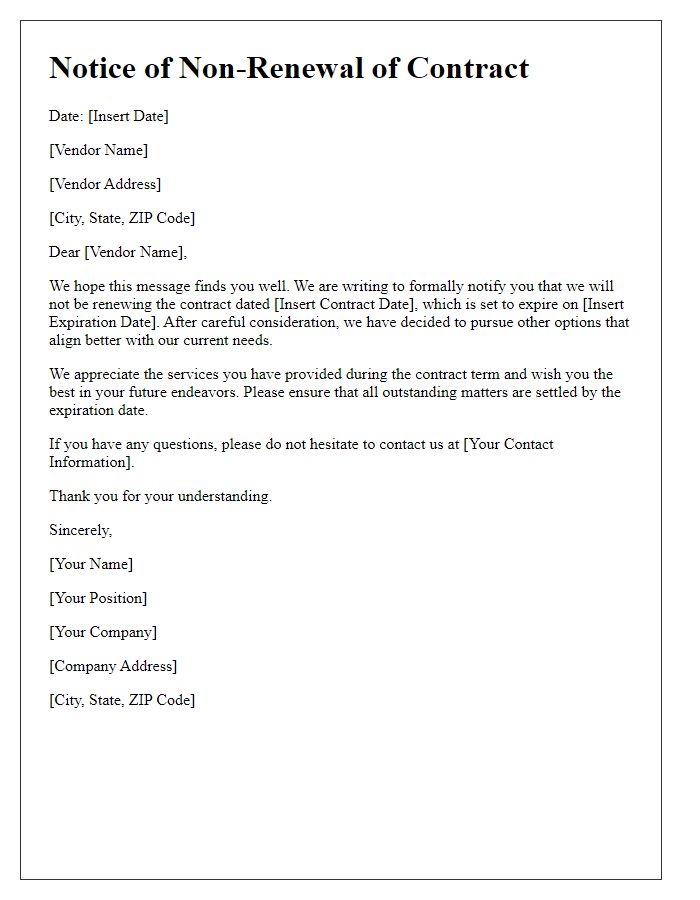
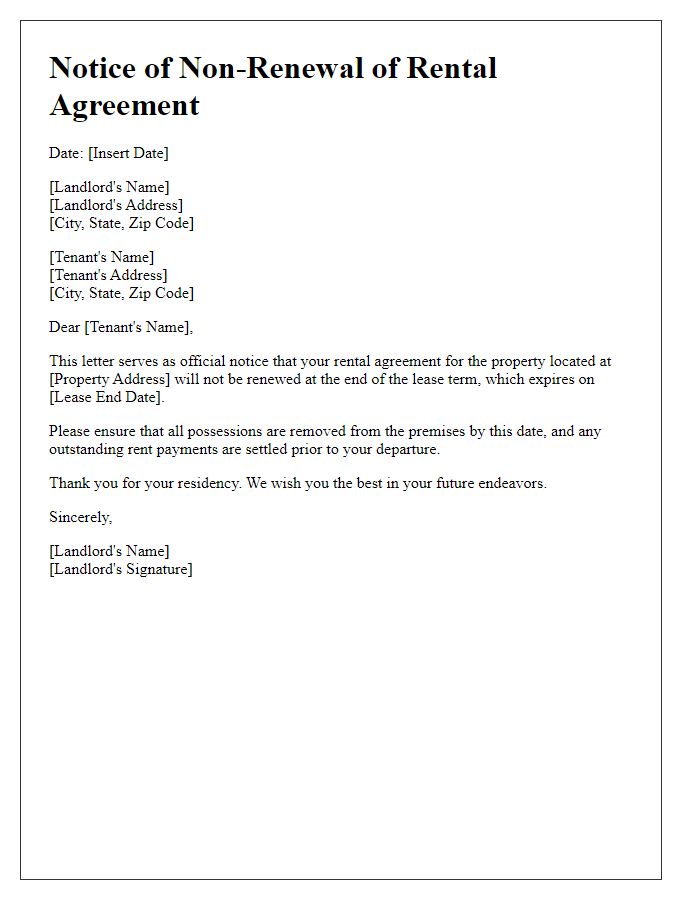
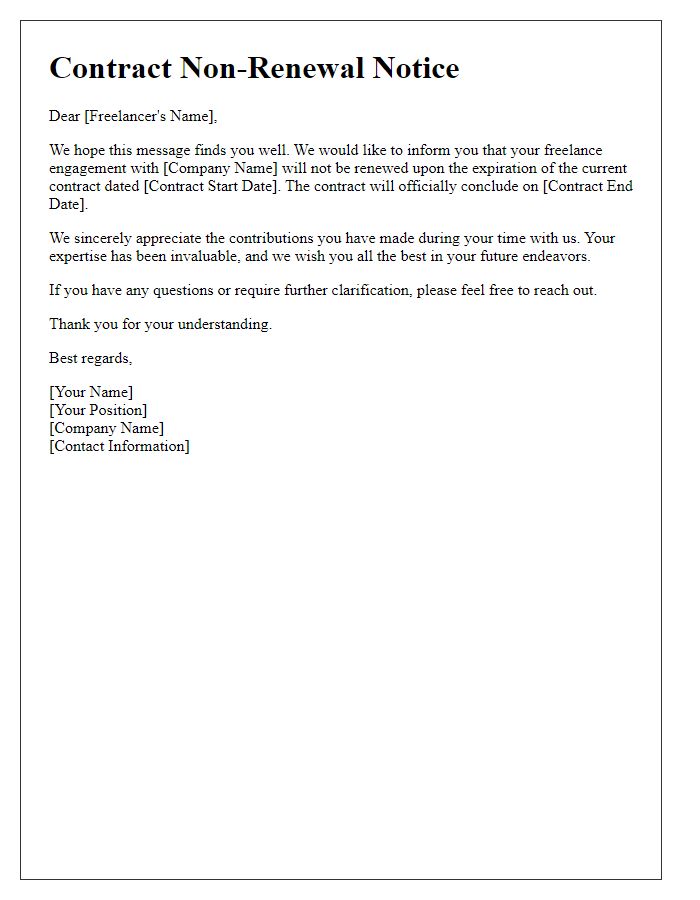
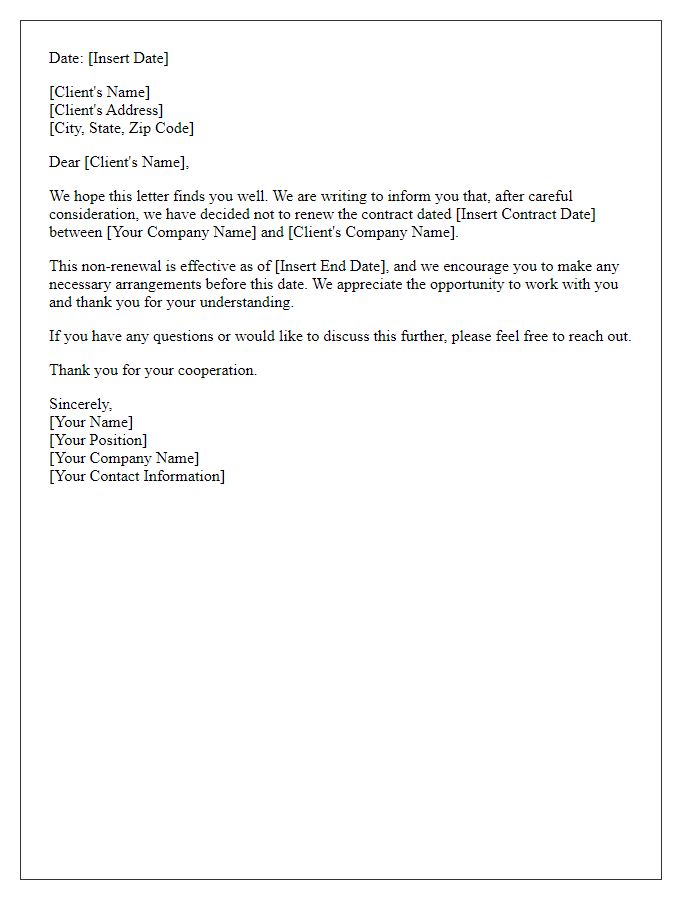
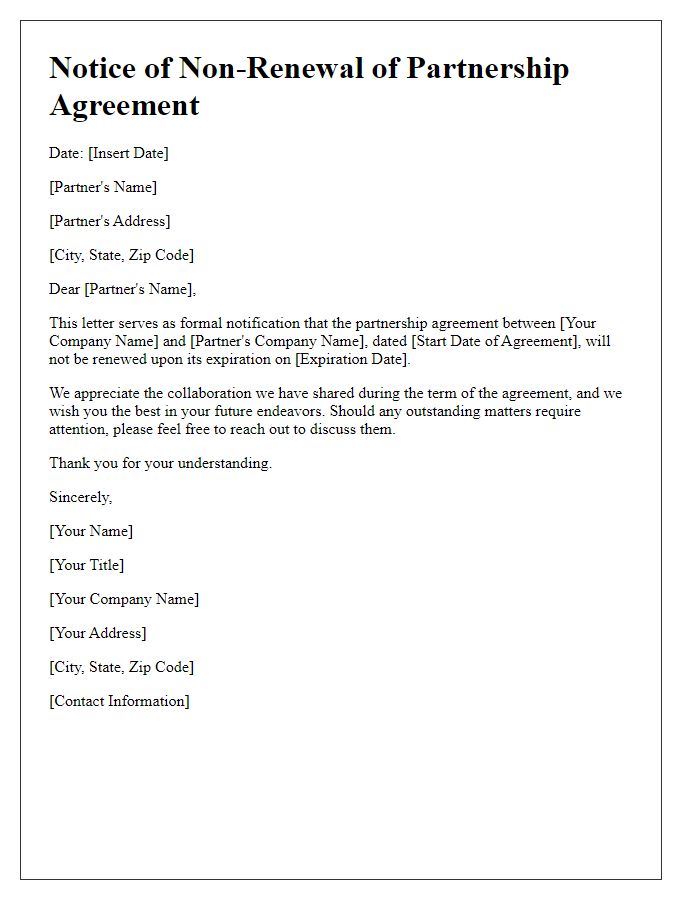
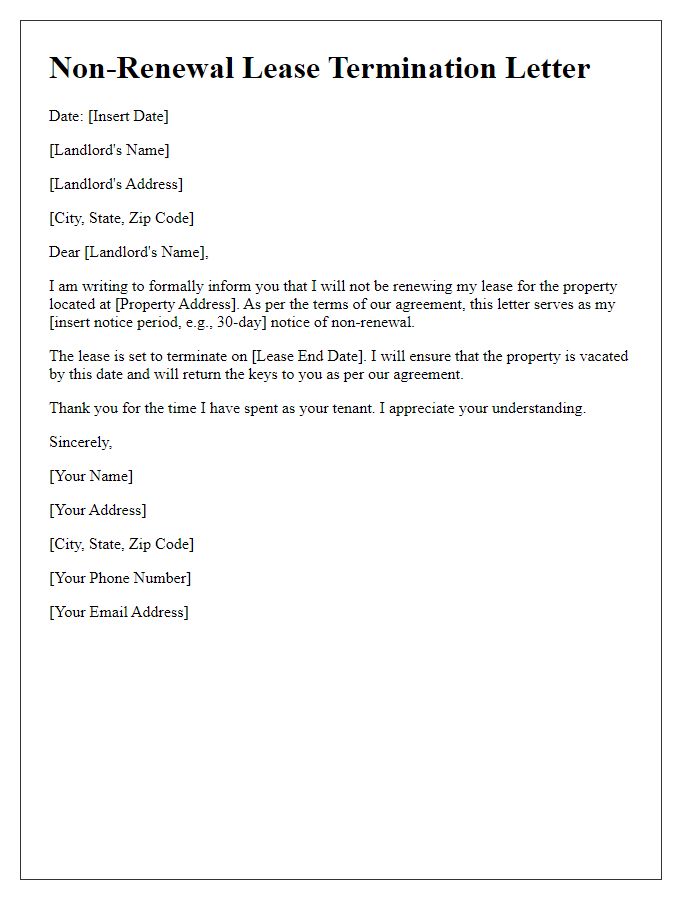
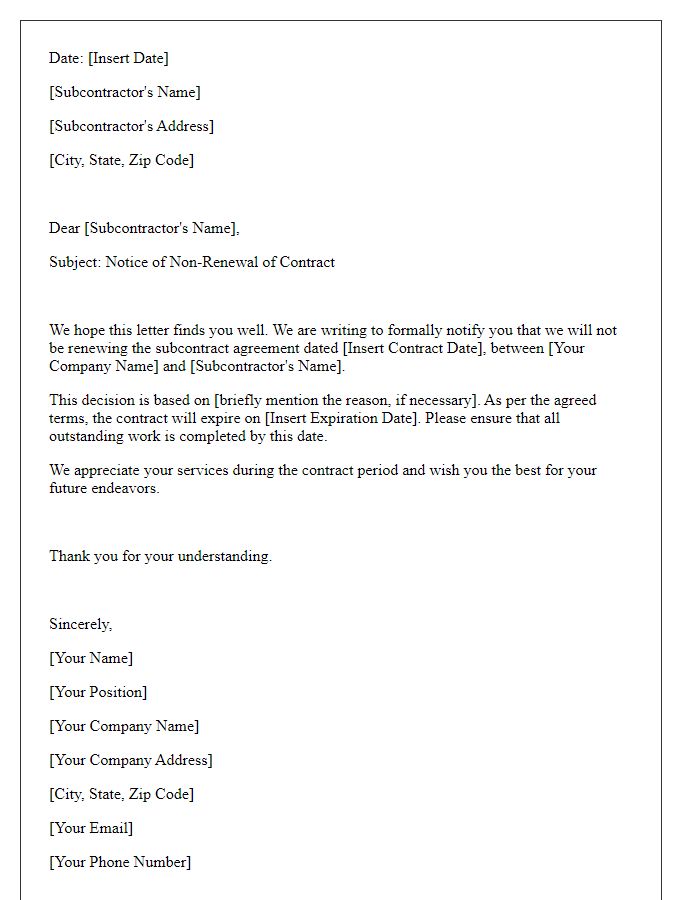
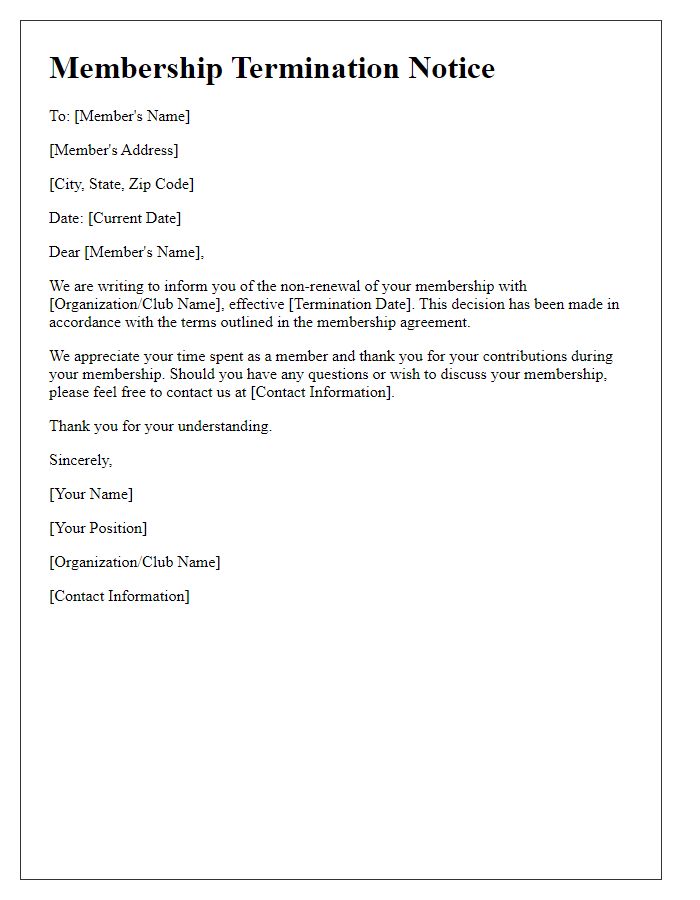

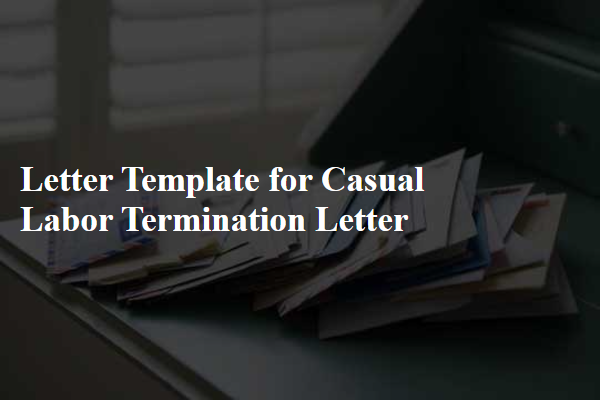
Comments